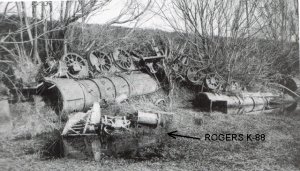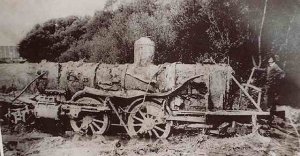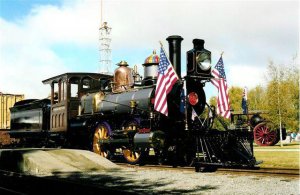You are using an out of date browser. It may not display this or other websites correctly.
You should upgrade or use an alternative browser.
You should upgrade or use an alternative browser.
Pretty sad way to treat a train
- Thread starter John P
- Start date
Yes, I remember the dismay when I saw a picture of all the NZR "K" class locos lined up for scrapping. "Give ME one, pleeeease".
D&J RailRoad
Professor of HO
An alarm on a loco. I like that. As though it might be heard over the roar of the engine.
Ray Dunakin
Member
Those "before and after" shots are amazing. I've always wondered how it is that a loco which has rusted and rotted for so long, can still be restored? Same with locos that have been burned in roundhouse fires, etc. Doesn't the heat damage the metal?
And just so you can see that down in NZ they don't just build Hobbit houses, they get them running again
[YOUTUBE]c02IYnQD8Jc[/YOUTUBE]
At the end for good measure are the 1930's NZ built Ka's also doing a double header.
[YOUTUBE]c02IYnQD8Jc[/YOUTUBE]
At the end for good measure are the 1930's NZ built Ka's also doing a double header.
I loved that Video Toots.
Ray I think they remake and replace a lot of the critical parts. Ive seen a spitfire being restored, by the time they were finished 70% of it would have been new metal.
Yes, it's a bit like the bloke that's got his grandfather's axe but "it's had 3 new heads and 5 new handles and chops wood like the day Grandad got it".
On a lot of the metal parts, they do become distorted from heat. The boiler and firebox, though, normally operate at temperatures higher than the common house fire, so in most cases, simply cleaning it up is all that is needed.Same with locos that have been burned in roundhouse fires, etc. Doesn't the heat damage the metal?
Several times I have purchased engines and transmissions from trucks that had caught fire and burned to the ground. After cleaning, replacing gaskets, and painting, the components worked with no problems for years after.
trailrider
Well-Known Member
Those "before and after" shots are amazing. I've always wondered how it is that a loco which has rusted and rotted for so long, can still be restored? Same with locos that have been burned in roundhouse fires, etc. Doesn't the heat damage the metal?
It depends on how hot the metal got and/or how deep the rust has penetrated. Samples of the metal can be taken and analyzed. A boiler will have to be pressure tested after being reassembled, and has to meet certain standards before being cleared for use.





